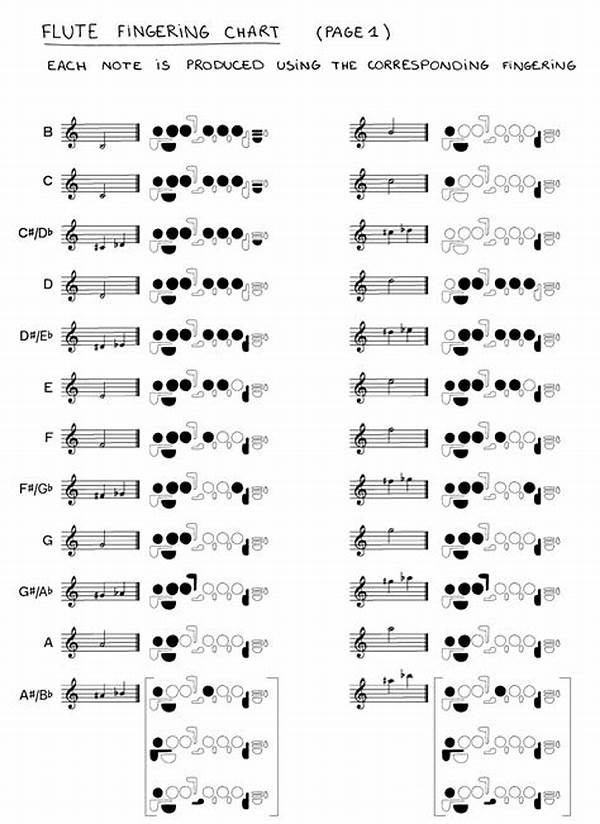Imagine sitting on a sunlit meadow, with the soft whisper of the wind accompanying the gentle sound of your flute. The ability to translate sheet music into beautiful melodies is a magical talent that opens the door to a world where emotions are expressed through sound and stories are told without words. Yet, the sheer complexity of musical notes strewn across a page can appear as enigmatic as an ancient scripture to the uninitiated. Fear not, aspiring flutist! Embark on this enlightening journey as we demystify how to read sheet music for the flute with an engaging blend of humor, creativity, and insightful perspectives.
Read More : Acoustic Instruments That Sound Great When Recorded Live
Are you ready to transform those perplexing clusters of notes and symbols into sweet harmonies? Welcome to the ultimate guide that combines humor, storytelling, and practical insights to turbocharge your flute-playing journey. Here, we’ll not merely educate but entertain, turning your learning journey into a melodious experience. Whether you’re a beginner flute enthusiast or someone looking to refine your skills, understanding how to read sheet music is pivotal, and we are here to unveil all the secrets.
Understanding the Basics of Flute Sheet Music
Reading sheet music for the flute is akin to learning a new language, where each symbol represents a distinct sound and rhythm. The language of music is universal, and gaining proficiency in it can significantly elevate your flute playing skills.
The Musical Staff: Your Starting Point
The five lines and four spaces on the staff are your best companions as they guide you to recognize notes. Each line and space corresponds to a specific note, bringing harmony to what seems chaotic at first glance. In the realm of the flute, you’ll become familiar with treble clef notes, such as G, A, B, C, D, E, and F, which form the foundation of most melodies you will play.
Time Signatures and Note Values
Have you ever danced in sync to the rhythm of your favorite tune? Much like dance steps align with beats, time signatures help organize music into a coherent flow. They indicate how many beats per measure you’ll encounter and which note receives one beat. With this insight, rhythmic patterns in flute sheet music begin to take form, guiding you in maintaining the tempo.
Bringing Expertise and Emotion Together
Reading sheet music is both an art and a science. While it’s technical, infusing emotion into your play brings sheet music to life.
Dynamics: From Whisper to Thunder
Imagine your flute narrating a story that crescendos from a gentle whisper to a booming declaration. Dynamics instruct whether you should play softly or loudly, thereby dramatizing the piece. Understanding these dynamic markings enhances your expressiveness and breathes life into your performance.
Read More : Dental Instruments Used In Oral Surgery Procedures
Articulation: Crafting Your Musical Identity
Slurs, staccatos, and legatos—these aren’t just fun words to say. They determine the articulation of notes, shaping the melody’s character and defining your unique musical identity. Mastery of articulation boosts the nuance and depth of your music interpretation, making even familiar tunes sound freshly innovative.
Practical Tips for Reading Flute Sheet Music
Consistent Practice is Key
Rome wasn’t built in a day, and the same can be said about mastering sheet music. Integrate regular practice sessions into your routine. Start with simple exercises, gradually increasing their complexity, laying a strong foundation for advanced musical pieces.
Seek Expert Guidance
From online tutorials to personal instructors, bustling venues for expert advice are aplenty. Feedback from seasoned professionals will elevate your proficiency, offering insights you might have overlooked.
Key Features and Common Challenges
Conclusion: Bringing Melody to Life
Ultimately, mastering how to read sheet music for the flute is a transformative journey. Not only does it unlock the potential to create captivating music, but it also serves as a platform for personal expression. With every note you play, you breathe life into written symbols, creating a resonance beyond the confines of the page. So, embrace your flute, let your notes soar, and dare to transmute sheet music into a living art form. Dive into this enchanting world of musical storytelling—where each melody played adds another verse to your unique musical narrative.
